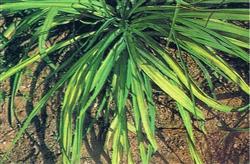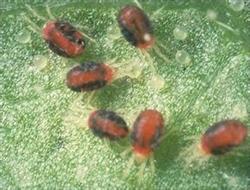Disease and insect pest control of lily

There are many kinds of lily diseases and insect pests, but the main ones that affect the lily harvest are lily Fusarium wilt, gray mold, leaf blight, virus disease, root rot, aphids, ground tiger, mole cricket and so on. The principle of disease and pest control: prevention first, comprehensive control. The biggest threat to lily production is Fusarium wilt and gray mold. In particular, Fusarium wilt of lily must be prevented from the aspects of crop rotation, seed selection and disinfection, focusing on agricultural control. When the lily Fusarium wilt has just begun to show symptoms, immediately use the right medicine knife: exhibition control, the control effect is only 70-80%, and its damage occurs when it is more than Rain Water season in April-May, and it is unfavorable to carry out chemical control, so it is extremely important to do a good job of prevention in pollution-free cultivation techniques. At the same time, pesticides with high efficiency, low toxicity and low residues should be selected and used according to the safe interval of pesticides. 1. Fusarium wilt is a fungal soil-borne disease, which is caused by Fusarium oxysporum and Fusarium oxysporum. Fusarium oxysporum has the highest isolation frequency and pathogenic rate, and is the main pathogen. The occurrence process of Fusarium wilt was as follows: at first, the bottom leaves turned yellow, the top of the stem became light purple and bent slightly; secondly, the bottom leaves of the diseased plant turned yellow or withered by 1/4 to half, and the upper part of the stem turned purple and curved; the leaves of the diseased plant withered more than half, and the upper part of the stem was seriously bent; finally, the whole plant showed symptoms, the whole plant withered, and the bulb disc turned brown and rotten. Control method: when lily Fusarium wilt begins to show symptoms, immediately use Luheng No. 1 5 grams to water 10-15 kg or 5% bacteriological clear water agent 300 times, or 50% nail cream copper wettable powder 400 times solution, or 60% Chlorothalonil wettable powder 500 times solution, should be 200-250 ml per plant, not too little, should not be too much. Continue irrigation every 5-7 days, 2-4 times according to the severity of the disease. 2. Botrytis cinerea is a common disease in lily cultivation and production, which mainly harms leaves and also infects stems and flowers. Round or oval disease spots appear on the leaves at first, of different sizes, the surrounding is reddish brown, and the interior is grayish white. The pathogen is dense gray mold layer in the damaged site (surface) and spreads through wind, rain and air flow. Generally, the disease begins from April to May and spreads rapidly in case of high temperature and high humidity. The suitable environmental conditions for the growth of pathogens were as follows: the temperature was 20-25 ℃, and the bacteria overwintered in the affected part. Prevention and cure method: you can choose Bordeaux solution of 1purl 100, or 86.2% copper master or 53.8% can kill 1000 times liquid spray, spray once every 7-10 days, spray 2-3 times continuously, the agent should be used alternately, the spray should be uniform and thorough. 3. Leaf blight is also a common disease in lily cultivation. The initial symptom of the disease is that after a small reddish-brown spot appears on the leaf, the spot develops into an oval, the center of the spot becomes yellowish brown, and seriously extends to the whole leaf. The necrotic part can form a yellow halo ring when the weather is wet, and sometimes yellow spots appear on the old leaves of Longya lily. Prevention and treatment: at the initial stage of the disease, sprayed with Bordeaux solution of 1VL 100 or 65% of Dysen zinc 600 times, or 50% carbendazim 800 times solution. 4. the symptoms of virus disease are the most common in leaves, such as shrinking and oblique leaves, irregular round markings on the front of leaves, dense leaves, obvious dwarfism of diseased plants, deformed buds, lighter color, and smaller bulbs. Control methods: spray to get rid of aphids, you can use 10-20 grams of Happy Dragon or aphid lice to kill 10-20 grams, or 20 grams at a time, or 20-30 grams of lice aphids to spray 40 kilograms of water evenly. 5. The root rot disease was characterized by the death of the lower leaves of the plant at first, and then developed upward, resulting in the death of the upper leaves and even the stem. The symptom is that the root is light brown, part of the root is rotten, and when the bulb is rotten, the whole bulb is rotten. When the bulb is rotten, the stem and root rot. Prevention and treatment: at the initial stage of the disease, 50% Dysenamine 200 solution or 70% chlorothalonil 500 times solution can be used to irrigate the root, each plant 200 liters, repeated irrigation 2-3 times every 7-10 days. 6. Aphids mainly harm the young leaves and stems of lilies, especially when the leaves expand, aphids parasitize on the leaves and absorb juice, causing lily plant atrophy, poor growth and malformed buds; at the same time, it also spreads virus and causes plant disease. The method of prevention and control is the same as that of virus disease. 7. Other diseases and insect pests are mainly ground tiger, mole cricket eating seedlings (stems), ants, earthworms, nematodes and so on, causing root rot and death of seedlings. Control method: before ① planting, 30-50 kg quicklime was scattered in the planting ditch (hole) per mu. Weeds must be removed before ② planting, and farm manure must be fully mature. ③ put tea withered or a small amount of paulownia on the root of the bulb. ④ irrigated the roots with dichlorvos 500,600 times to control mole cricket and ground tiger.
- Prev

Storage and fresh-keeping of Lily
[symptom] is generally latent infection. If it is co-infected with lily asymptomatic virus, it will produce chlorotic and necrotic spot symptoms. Cucumber mosaic virus (CucumbermosaicCucumovirus,CMV). The virus is RNA virus, which belongs to cucumber mosaic virus. The virion is spherical in diameter and 30nm in diameter. The genome.
- Next

Five methods of Postharvest Management of Auricularia auricula planted in the ground
Remove the pollution sources, treat and remove the polluted or seriously harmful culture materials in time, and clean and disinfect the polluted environment at the same time.
Related
- Fuxing push coffee new agricultural production and marketing class: lack of small-scale processing plants
- Jujube rice field leisure farm deep ploughing Yilan for five years to create a space for organic food and play
- Nongyu Farm-A trial of organic papaya for brave women with advanced technology
- Four points for attention in the prevention and control of diseases and insect pests of edible fungi
- How to add nutrient solution to Edible Fungi
- Is there any good way to control edible fungus mites?
- Open Inoculation Technology of Edible Fungi
- Is there any clever way to use fertilizer for edible fungus in winter?
- What agents are used to kill the pathogens of edible fungi in the mushroom shed?
- Rapid drying of Edible Fungi

